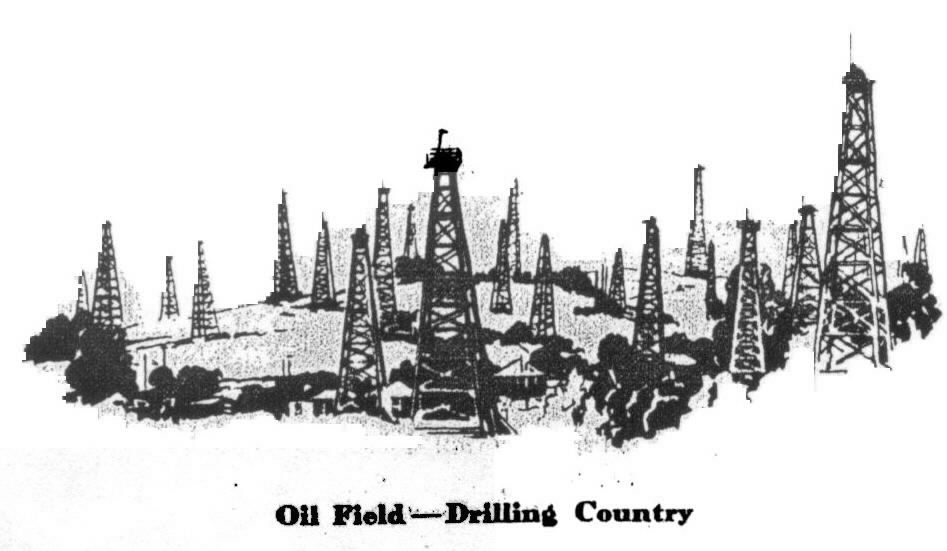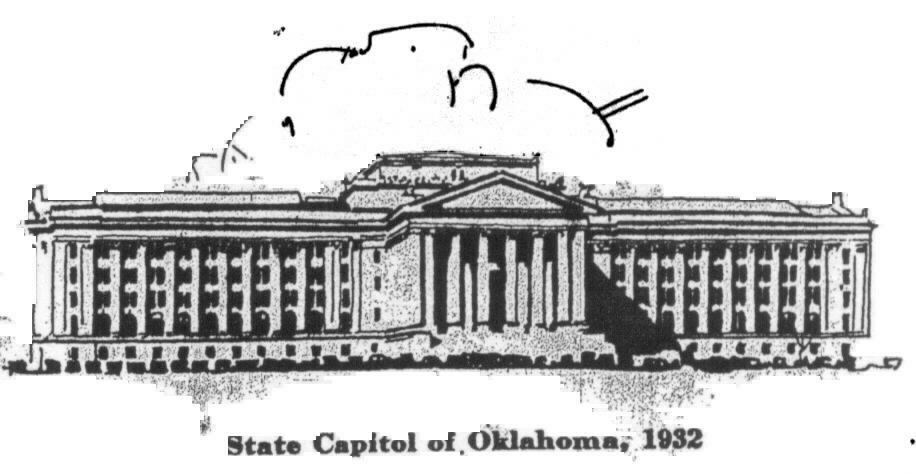Oklahoma History
|
The big buffalo herds of the Southern Plain were mostly exterminated within two or three years after the last Indian war. Within a few years, these were replaced by great herds of range cattle owned by ranchmen from neighboring states, who leased the ranges from the Indians. This pastoral era lasted from ten to fifteen years, ending In various areas, respectively, as the surplus lands thereof were to be thrown open to homestead settlement. In the central part of the Indian Territory was a tract of about 3,000,000 acres which was not assigned to any Indian reservation. Land-hungry white adventurers looked upon these un assigned lands with covetous eyes These men, who became known a. "boomers," first attempted to make a forcible settlement on the lands of the unassigned tract In the spring of 1867. Repeated invasions followed during the ensuing five years. Thereafter, the struggle for the right of homestead settlement was transferred to the halls of Congress. The closing sessions of the 50th Congress saw the legal sanction of the proposed opening of that area to homestead settlement formally adopted. April22nd, 1889, witnessed the picturesque opening of "the Oklahoma country"--as it had become known-- when a vast throng of wildly excited, madly racing pioneers surged over the border and Settled the whole area in a day. Other land openings followed in 1891, 1892, 1893, 1895 and 1901, respectively, as the surplus lands of the various Indian reservations became available for homestead settlement. The Territory of Oklahoma was organized In May, 1890. It included all that part of the Indian Territory located west Of the lands of the Five Civilized Tribes. In 1893, Congress made provision for the creating of the Commission to the Five Civilized Tribe. Its obvious though unstated object was that of persuading the Indians of the five nations to agree to a termination of tribal relations, to accept allotments of land In severalty and thus pave the way for statehood. In 1900 each of the two territories had nearly 400,000 Inhabitants. The new century saw heavy immigration-into both territories The era of greatest activity in railway construction was from 1898 to 1904. In 1901 came the discovery of oil and gas in great quantities The work of the Commission to the Five Civilized Tribes proceeded slowly -- partly because of the conservatism of the Indian people and also because of the inexperience and Ineptitude of the first members of the commission. After 1900, the question of statehood for the two territories became one of increasing interest. There were pronounced differences of opinion as to whether the two should admitted separately Into the Union or jointly as one state In June, 1906, Congress passed an enabling act, granting to the people of the two territories the right to formulate and adopt a constitution and appy for admission into the Union as a single state This was done and the state was declared to be formally admitted into the Union by executive proclamation of President Roosevelt, November 16, 19Q7. Oklahoma City became the permanent capital In 1910. With a population of nearly 1,500,000 when the state was admitted it has gained approximately 750,000 since. Since 1907, Oklahoma has had great material development as well as in social and educational lines. Always noted for Its agricultural resources and possibilities, its mineral resources have proven to be of almost boundless extent and value In recent years, developments along the line of the petroleum and natural gas industries have made It the wealthiest of the younger commonwealths. Million, have been expended upon the development of the states educational system--both common schools and institutions for higher education. Within the past decade vast sums have also been expended on the
construction of modern hard-surfaced roads
and highways Agriculture is still
Oklahomas premier Industry, wheat,
cotton, corn and the grain sorghum. being
the prin Joseph B. Thobourn, |
dat 06-2002
 The Indians of the untamed tribe, of
the Southern Plains still roamed at will
in the western part of the Territory as
late as 1867. Efforts were then made to
locate them on reservation, but without
much success. A measure of peace was
maintained from 1869 to 1874, when many
of them resorted to open warfare again.
This war lasted through the ensuing
winter, the hostile bands being reduced
to submission and forced to return to
their reservations.
The Indians of the untamed tribe, of
the Southern Plains still roamed at will
in the western part of the Territory as
late as 1867. Efforts were then made to
locate them on reservation, but without
much success. A measure of peace was
maintained from 1869 to 1874, when many
of them resorted to open warfare again.
This war lasted through the ensuing
winter, the hostile bands being reduced
to submission and forced to return to
their reservations. cipal crops produced Livestock
husbandry and the dairy industry are also
Important branches of agriculture.
Horticulture no as well developed as the
natural condition and the abilities and
need of the population would warrant There
is still room for a greatly increased
population and a much greater material,
industrial and educational development in Oklahoma.
cipal crops produced Livestock
husbandry and the dairy industry are also
Important branches of agriculture.
Horticulture no as well developed as the
natural condition and the abilities and
need of the population would warrant There
is still room for a greatly increased
population and a much greater material,
industrial and educational development in Oklahoma.